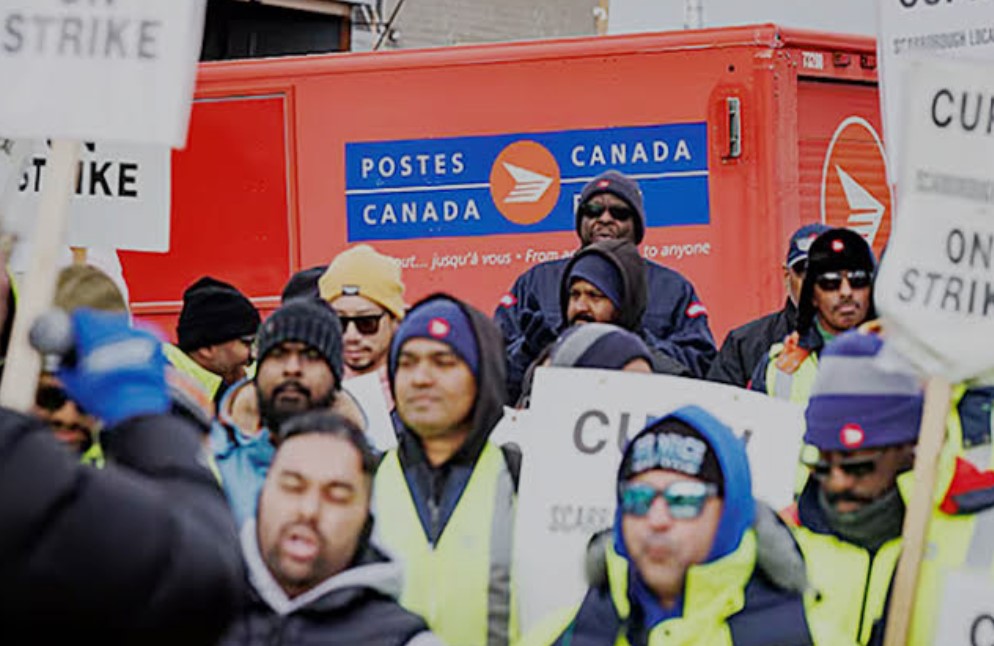The Canada Post strike has been a recurrent issue in Canada. Whenever the workers demand fair wages, better benefits, and working conditions, it hits the newspapers. Being the largest postal service in Canada, Canada Post plays a central role in linking communities, promoting e-commerce, and ensuring that time-sensitive mail delivery happens across Canada’s vast geography. When talks of a strike are on, people of Canada naturally ask: How does this affect me?
This article delves into the history of Canada Post strikes, what leads to the current labour dispute, the effect on businesses and individuals, and how Canadians can prepare.
A Brief History of Canada Post Strikes
Labour disputes at Canada Post are an old-standing issue. For the past few decades, CUPW has been in constant opposition with management over working conditions, pay equity, and postal modernization. Some of the notable strikes were:
- 1965 Postal Strike – Railroad strike became the first major strike, changing postal servants into unionized workers.
- 2011 Lockout and Back-to-Work Legislation – This 2011 dispute resulted in rotating strikes, followed by a nationwide lockout. Finally, the federal government issued back-to-work legislation.
- 2018 Rotating Strikes – Throughout the country, workers conducted rotating strikes, disrupting deliveries during the hectic holiday shopping period.
These disputes are evidence of an ongoing battle between modernization, cost control and raising worker rights in a changing economy.
Why Canada Post Workers Might Strike in 2025?
Canada post strike 2025 springs from some key issues stemming from both long-standing grievances and the newer ones:
Wages and Inflation
Compensation
Employees contend that their salaries have not kept control with inflation. Increased rents in cities like Toronto, Vancouver, and Ottawa prompt postal employees for a higher compensation to support their families.
Job Security
With digital communications eating into mail volumes, Canada Post has been increasingly compelled to concentrate on its parcel service, which is oriented toward e-commerce. The eventuality of job losses, contracting out of services, and automation removing the last vestiges of the human touch are some issues underlying workers’ concerns.
Occupational Safety
Letter carriers usually find themselves in harsh working conditions, with a combination of extreme weather and heavy workloads. The majority feels the pressure to meet delivery time targets has increased the job’s stress level and even endangered safety.
Insurances and Pension
Similar to other workers all over Canada, postal workers want to safeguard their pension plans and health benefits for the aging workforce.
Concerns on Privatization
Fears remain that Canada Post might someday become similar to other national postal services that came to be privatized-bargain worker protection, bargain service quality.
How a Strike at Canada Post Affects Canadians
Canada Post strikes do not only affect the workers and managers; they affect millions of Canadians in their daily lives.
- Small Businesses,
Small businesses dependent on affordable Canadian shipping are hit with higher costs and delays during strikes. While large companies can change to a courier company such as UPS, FedEx, or Purolator, it is difficult for smaller retailers to absorb the extra costs.
- E-commerce and Online Shopping
With Canadians shopping more online, parcel delivery is more important than ever. Delays in shipping cause customer frustration and potential loss for the business.
- Rural and Remote Communities
Canada Post is sometimes the only option available for the delivery of mail and parcels in rural and northern regions. A strike could seriously make certain essential products, medication, and the ability to communicate inaccessible.
- Government Documents and Legal Purposes
Passports, tax forms, immigration documents, and other government documents are sent by Canada Post. Any delays in these processes affect others-too-their travel, deadlines for tax payments, and legal procedures.
- Healthcare
In Canada, prescription drugs are mailed to many of the patients. The strike, if set into existence, would put health risks in place since patients would be unable to access their medication within time.

Preparing Canadians in the Event of a Canada Post Strike
Should the strike come near, there are various steps that Canadians could take to protect themselves from the worst of disruptions, including-
- Plan ahead: Try to order all your items, like medications or legal documents, far from the deadline.
- Seek Alternative Carriers: Make inquiries about using Purolator (which belongs to Canada Post), FedEx, DHL, or UPS for your urgent deliveries.
- Go Digital: Up until now, paperless billing was only made available to prevent missing deadlines.
- Order Local Pickups: Some retailers let customers pick up orders directly at stores or lockers.
- Stay in the Loop: Check official updates from Canada Post and CUPW to ascertain when service disruptions may be in effect.
Astronomical Amount of Canada Post Strike into Digital Shift
Each strike at Canada Post tends to accelerate Canada’s digital communication and courier-based logistics shift. More Canadians embrace online payments, digital statements, and courier services; a steady decline comes the traditional letter mail.
Though it maintains a sort of country-wide utility, Canada Post remains a fantastical corporate entity. Unlike private courier companies, it owes legal service obligations to each address in Canada irrespective of remoteness. Hence it acts as a lifeline for northern Indigenous communities, seniors, and rural-worlders without easy access to alternatives.
The Government’s Role in the Canada Post Strike
Whenever a Canada Post strike occurs, the federal government faces a tough choice: allow the strike to continue under labour law or intervene with back-to-work legislation.
Proponents of intervention hold that postal services are necessary, especially for business and in healthcare, and for rural Canadians.
Some say forcing workers back weakens their bargaining position and is an infringement of their labour rights.
Hence, balancing the services that are considered essential and workers’ rights has remained under constant debate.
The Future for Canada Post
The recurring strike problem reflects deeper issues regarding the future of the postal system in Canada:
- Should Canada Post become a fully modernized package delivery company competing with Amazon, UPS, and FedEx?
- Can postal banking, green delivery solutions, or new digital services generate extra revenue?
- How do we protect workers’ rights while assuring Canada-wide affordable delivery for Canadians?
These questions remain at the heart of negotiations in 2025, and will surely affect the very shape of Canada Post for decades.
Final Thoughts
The Canada Post strike is more than a labour dispute—it is an issue affecting the people, businesses, and communities across the country. While workers ask for fair wages, benefits, and job security, Canadians worry about disruptions to important services.
So, for 2025, in the meantime, one thing is for certain: Canada Post is not merely a delivery service; it is an intrinsic part of Canadian life. Whether in the longer run through negotiation, intervention by government, or modernization, Canadians will be watching very closely.
Enough said, With the Canada Post strike update looming, now is perhaps the best time to prepare, seek alternatives, and stay updated. In a matter of time, new postal systems may enter our working, but the need to link Canadians by whatever means certainly remains.





Pingback: Canada Post Strike 2025 Guide | Startup Editor